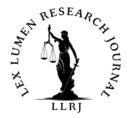Written by Tanvi Aggarwal - Law Student
September 2025
Introduction
Quantum computing, once thought of as a distant scientific idea, is now emerging as a practical technology with the power to transform digital systems. Its most serious impact is on cryptography, the very system that protects our online privacy, banking transactions, and secure communications. This article examines the legal challenges and opportunities that come with this shift, stressing the need for adaptable laws and forward-looking regulations. Only by updating our legal framework can we safeguard personal data, cybersecurity, and fundamental rights in the coming quantum age.
The Quantum Threat to Cryptography
Modern cryptographic systems, including RSA and elliptic curve cryptography, are built on mathematical problems that are extremely hard for classical computers to solve. RSA, for instance, secures data by relying on the difficulty of factoring very large numbers, while elliptic curve cryptography is based on the challenge of solving discrete logarithm problems. These methods have successfully resisted decades of attacks and rapid progress in computing, becoming the foundation for online banking, global internet security, and secure communications.
Quantum computing, however, threatens this foundation. Algorithms such as Shor’s, developed in 1994, are capable of factoring large numbers and solving discrete logarithms at speeds impossible for classical machines. If large-scale, fault-tolerant quantum computers become practical, they could easily break the encryption systems that protect sensitive information today, leaving digital infrastructures highly vulnerable.
A particularly dangerous possibility is the “harvest now, decrypt later” strategy, where attackers store encrypted information today, planning to decode it once quantum technology matures. This means sensitive data—including government files, corporate research, and personal records—could be exposed in the future, even if it is secure at present.
The Existing Legal and Regulatory Landscape
Rules governing cryptography and data security come from many levels of law—international treaties, regional regulations, and national policies. For instance, the Wassenaar Arrangement controls how cryptographic technologies are exported, ensuring they are not misused for harmful purposes. This has a direct impact on how countries regulate software and hardware that contain encryption.
The Budapest Convention on Cybercrime, another major treaty, was the first to deal with cross-border cybercrime. It tries to balance giving governments the tools to fight online crime with the need to protect privacy and online freedoms. However, when these frameworks were written, the risks posed by quantum computing were not even imagined.
In recent years, privacy rights have also shaped encryption debates. The Indian Supreme Court’s judgment in K.S. Puttaswamy v. Union of India[1] made privacy a fundamental right, noting that encryption helps safeguard personal liberty. Similarly, Europe’s GDPR imposes strong data protection rules that could face reinterpretation as quantum technology undermines current cryptographic systems.
The problem is that most existing laws take encryption for granted as secure. Quantum computing breaks that assumption, exposing a gap that lawmakers and regulators have not yet addressed.
Transitioning to Post-Quantum Cryptography
To address the risks quantum computing poses, researchers are developing post-quantum cryptography (PQC)—new algorithms capable of resisting attacks from both traditional and quantum machines. Among the leading approaches are lattice-based systems, hash-based signatures, code-based mechanisms, and multivariate polynomial cryptography.[2]
The U.S. National Institute of Standards and Technology (NIST) is leading global efforts to evaluate and standardize these algorithms, with the process expected to conclude soon. Once finalized, the shift to PQC will require large-scale changes to software design, hardware infrastructure, communication networks, and existing security protocols.
Yet, the transition will not be purely technical; it raises complex legal and regulatory challenges.[3]
- Regulatory compliance: Laws may need to mandate timely PQC adoption, balancing security priorities against costs and interoperability.
- International coordination: Since data and cryptography standards cross borders, inconsistent regulations could open security loopholes or hinder trade.
- Standards certification: Governments and regulatory bodies must create systems to verify PQC reliability and clarify liability in case of failure.
- Intellectual property (IP): As PQC techniques develop, patent disputes may arise, calling for updated IP regimes adapted to quantum-era innovations.
Intellectual Property Considerations
Quantum computing covers everything from powerful new algorithms to advanced hardware and encryption systems. But these breakthroughs raise tough questions for patent law. Traditional rules—like proving that an idea is truly new, inventive, and clearly explained—are not always easy to apply in such a fast-changing and technical field. To keep up, patent offices need updated guidelines and trained experts who understand the unique challenges of quantum technology. This would help balance fair protection with open innovation.
Strong and predictable intellectual property rules are also vital for quantum-safe cryptography. Clear protections give researchers and companies the confidence to invest in new ideas, while speeding up the creation of secure tools that will protect data in the quantum era.
Ethical and Societal Implications
Quantum cryptography is not just about law and science—it also comes with ethical and social challenges.[4]
- Fair Access: Because the tools are expensive and highly specialized, rich countries and big companies could benefit first, widening the digital gap with poorer regions.
- Good or Bad Use: While quantum systems can make communication safer, they could also be misused by criminals or oppressive governments if left unchecked.
- Protecting Privacy: Strong, quantum-resistant encryption should continue to defend people’s rights to privacy and freedom.
This means future laws must do more than set technical rules—they need to build in fairness, accountability, and public safeguards so that quantum innovation benefits everyone, not just a few.
Preparing the Legal Ecosystem for Quantum Security
To deal with the risks of quantum cryptography, legal systems need to act on several fronts:
- Smart Laws: Rules should be flexible and neutral so they can keep up with fast-changing technology.
- Quantum Training: Lawyers, judges, and policymakers must understand the basics of quantum tech to handle new disputes.
- Working Together: Governments, universities, and companies should team up to set standards, share knowledge, and fund research.
- Global Rules: Countries need to update agreements so that security practices are consistent worldwide.
- Protecting Rights: Any new laws must put privacy and individual freedoms first, ensuring technology does not undermine fundamental rights.
Conclusion
Quantum computing could transform technology but also risks breaking today’s encryption, which keeps our digital world safe. This creates big legal challenges involving privacy, security, intellectual property, and ethics. The solution lies in flexible laws, international cooperation, and strong global standards to handle quantum threats. As encryption shifts to quantum-proof systems, the law must keep pace to protect trust, safety, and human rights. The rise of quantum technology is more than just a tech issue—it is a legal test that demands smart and responsible action worldwide.
[1] Justice K.S. Puttaswamy (Retd) and Anr v Union of India and Ors (24 August 2017) AIR 2017 Supreme Court 4161.
[2] Post-Quantum, ‘Telecom’s Quantum‑Safe Imperative: Challenges in Adopting Post Quantum Cryptography’ (Post-Quantum, 2025) https://postquantum.com/post-quantum/telecom-pqc-challenges/ accessed 8 September 2025.
[3] K Balarabe, ‘Quantum Computing and the Law’ (2025) 16(2) European Journal of Risk Regulation 794, 794-813.
[4] World Economic Forum, Quantum Computing Governance (2025) https://www.weforum.org/projects/quantum-computing-ethics/ accessed 8 September 2025.


